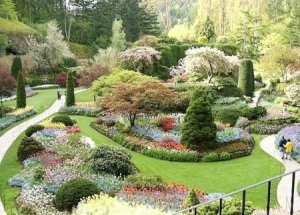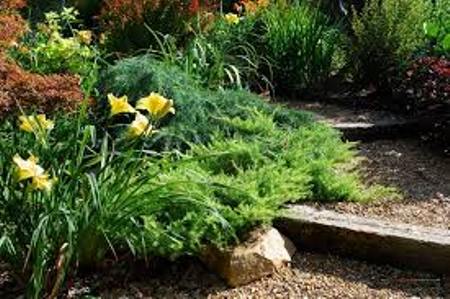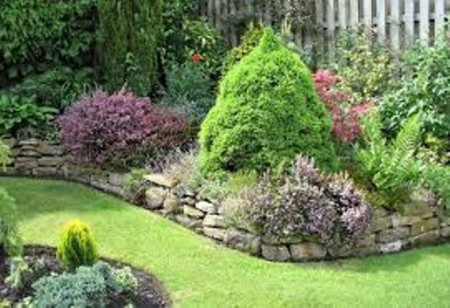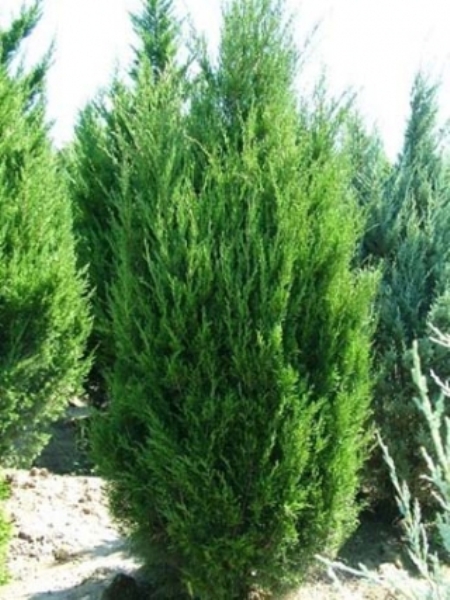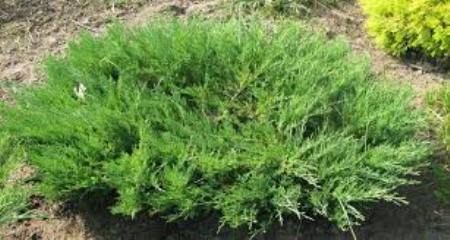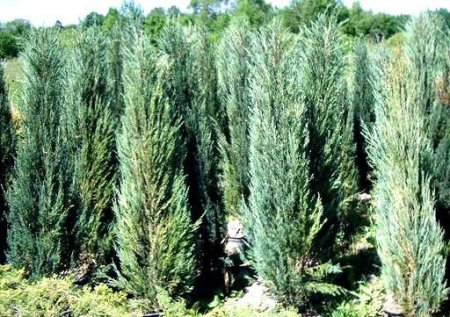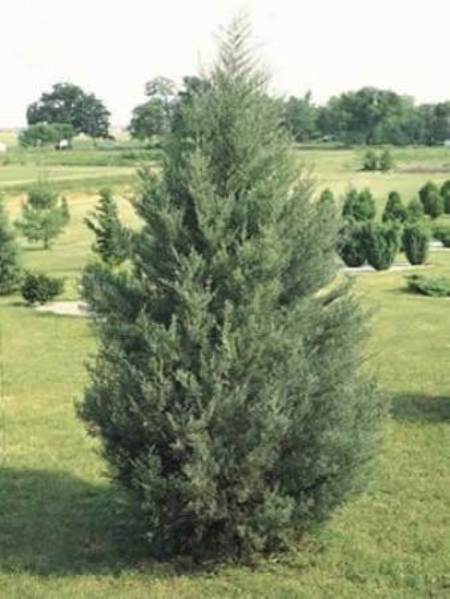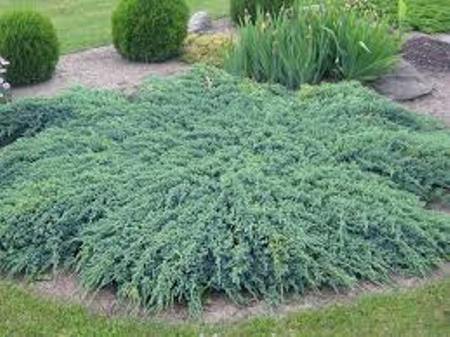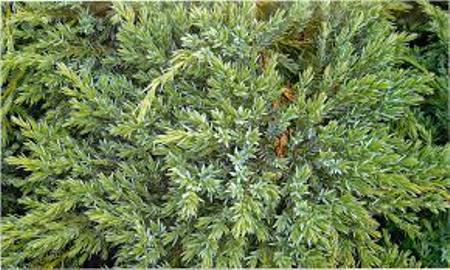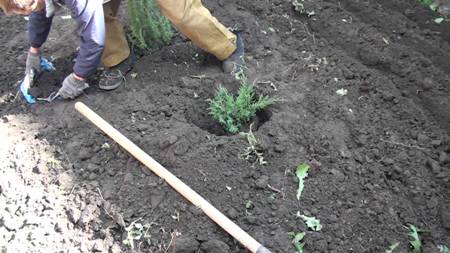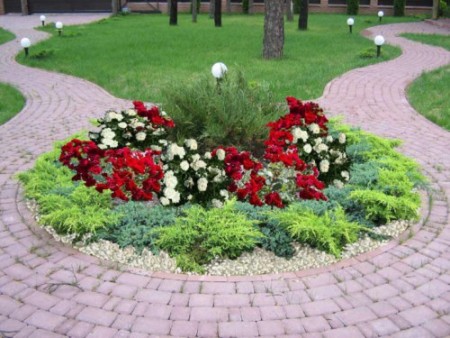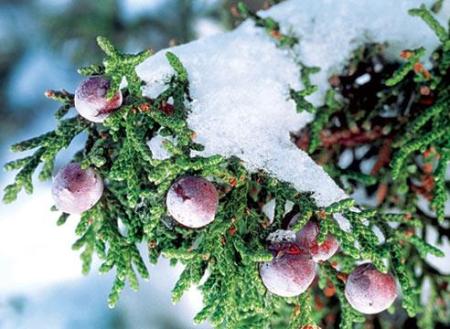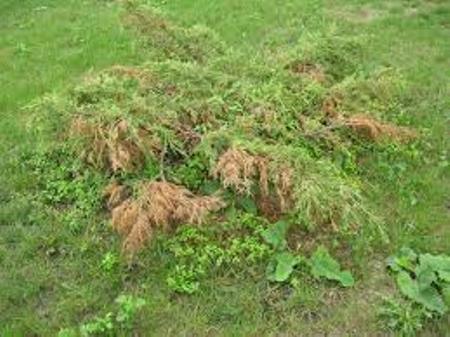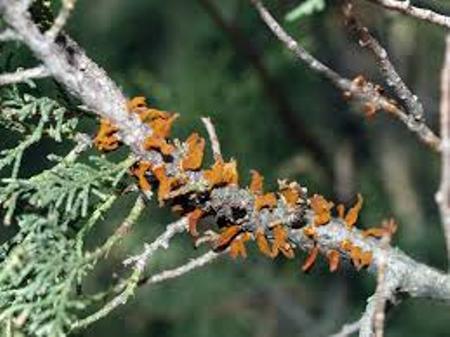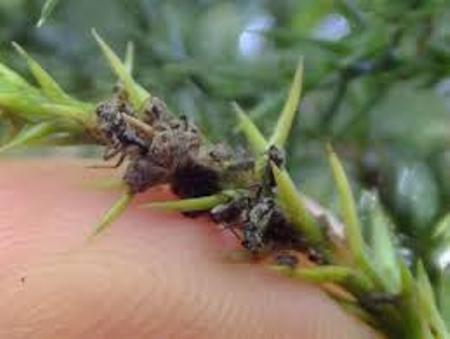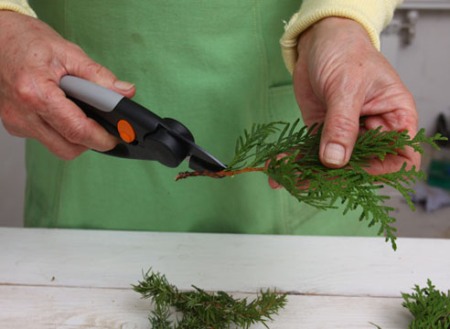A person who finds himself in a juniper grove has the most pleasant sensations - from the amazing aroma of the cypress evergreen shrub, he receives a lot of positive emotions. To the joy of gardeners, this type of plant can be not only wild - domestic gardening practices the successful cultivation of juniper in the middle lane. Plants of the cypress family are famous for their originality and decorative appearance, but their cultivation requires special attention and careful care.
Content
Juniper in the garden
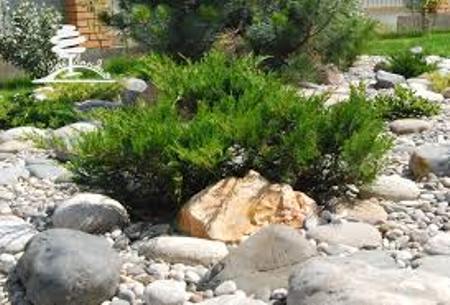
The grace and power of juniper for more than a decade have been attracting the attention of both experienced gardeners and amateurs. It is interesting not only to its picturesqueness and splendor, but also by aromatic healing properties that can help in the treatment of many diseases. Having landed the juniper seedlings on the territory of the personal plot, the owners will receive not only a unique garden design, but also a saturated aroma, clean air.
Juniper is rightfully considered one of the most common types of coniferous trees, which are most often used to design garden design. In almost all varieties of landscape design - flower beds, mountaineering and so on, juniper takes the main position.
Juniper, like other coniferous decorative plants, can be purchased at a specialized gardening store. Typically, young plants for sale are provided in plastic containers.
Juniper species and varieties which one to choose for landing
This representative of the flora is famous for the variety of varieties. The difference between the varieties is primarily determined by sizes: representatives of one type of juniper can reach a height of 15 meters, representatives of others - to be a bush that belongs to the family of creeping. Quite often, the design of the garden involves planting different types of juniper varieties.
The most valuable varieties include:
Juniper is ordinary, the most famous variety in the middle lane has its subspecies:
- Hibernica is a tall tree that has the shape of a column, when using it in the arrangement of garden design, you need to take into account its maximum height, which with proper care can reach 3.5- 4 m.
- Compressa is a type similar to the previous, but with a much smaller height, reaching 1 meter.
- Green Carpet- a representative of a steel variety, is used mainly to create a hedge or to create a lawn design.
An ideal place for landing juniper - along the tracks located on a personal plot, stairs or other places intended for the passage. Most importantly, having planted juniper on the site, do not forget about the need for timely care of the plant and trimming it.
Chinese juniper. Another rather bright species of conifers. The maximum height of some varieties is about 20 m. Usually, plants have a spreading crown. Depending on the subspecies of their needles, it is light green, blue or golden yellow shades. It looks good both in a group landing and in solitary. The deciding to plant Chinese varieties should be taken into account that their growth occurs much more slowly than other representatives of the species.
The valuable subspecies of the Chinese juniper include:
- Gold Coast- a bright representative of the species, belongs to flat shrubs, has a golden green color.
- Plumosa- a decorative, dwarf representative of the species, is mainly used for the decor of the entrance and lawns.
- Blue Alps is a tall variety, has blue needles and is famous for special aromatic properties.
- Old Gold- shrub, branches are wide, have a bronze color.
Cossack juniper. It is mainly planted in composition with perennial plants in the central part of the garden. Good both in combination with other varieties and types, and without neighbors. The variety belongs to fast-growing shrubs, has a dark green color, low. Refers to creeping representatives.
The juniper is rocky. In garden design, it is used much less often. It has a crown of a special shape: in tall representatives of the variety, the shape resembles Keglu, in low -growing ones - a ball of irregular shape. The maximum height of the rock juniper is 12 - 13 meters. The rocky variety needs circumcision, regular and plentiful watering. When planting such a variety on the site, it is necessary to equip a drainage system that will not allow stagnation of water.
Red cedar. The tree is distinguished by its harmony, brown-red bark and needles of dark green shades. Fragrant essential oil is made from the Virgina branches. It does not require certain soil for planting, resistant to low temperatures.
Horizontal juniper. Reaches a maximum height of 40 cm. It is used to create coniferous carpets. The coloring of a crawling shrub is from green shades to blue. It has a powerful root system, therefore it is used to strengthen the slopes and design of rocky areas. It does not need constant watering, so it often lands in places with limited access to water.
Scales juniper. The needles are hard, blue. Kaprizen and picky in care. It is sick from both low temperatures and from the scorching, sultry sun. Used to decorate curbs and hedges. Good for decorating alpine slides. Does not take root on the soils of clay in the composition. It disappears in cases of lack of drainage system in too wet areas.
Juniper is used in almost any design of the Japanese style. The Japanese style involves the presence of his seedlings in all central places.
How to grow juniper
After making a decision on which juniper to plant on the site and its varieties are finally determined, you can make a trip to a specialized store for seedlings.
how to choose seedlings correctly
First of all, it is worth paying attention to the three main points: the development of the root system, its condition and needles. The roots of the seedling should occupy the entire volume of the container into which it is planted. In condition, they should be white and fresh. The needles should not be dim, yellowed and rarely located.
After the purchase, you should decide on the place for landing. This type of coniferous plants is demanding of moisture, most varieties prefer peaty, drained soil. The soil in different areas can be very different in structure and composition. If the soil in the selected place does not correspond to its composition, this issue is easily solved by the supply of soil of the desired quality http://rosagrogrunt.ru/. The landing site should be well lit by the sun. An ideal place for them will be an open part of the personal plot.
landing
Before planting seedlings, it is necessary to carefully study the needs of a particular selected variety. Landing juniper can be performed after processing seedlings with a special composition that prevents the formation of fungal diseases, which are very susceptible to conifers of this species.
The fossa for planting should have a depth of 2 shovel bayonet. Half of the pit should be filled with peat ground and sod soil. The roots of the seedling need to be carefully straightened and placed in the hole. The seedling is removed from the container in which he was bought, immediately before landing in open ground.
Now the hole with the plant can be completely filled up and at the same time form a circular canal for irrigation. The first watering must be done with two buckets of water. Having diluted in it a tool for better rooting of the plant. The seedling will also need a canopy that will protect him from direct sunlight until completely rooted and will not allow the combustion of the needles.
features of care
Watering and spraying-the plant is very necessary on hot, summer days, the amount of water per bush should be about 10-30 liters, but watering is often not recommended. Spraying or sprinkling during the summer period should be carried out as often as possible - coniferous plants suffer very much from too dry air. It is desirable to spray the bushes in the evening.
The juniper does not need frequent and abundant top dressing, for young plants you will need only one feeding per year - at the beginning of the autonomic period in April. The best fertilizers will be nitroammofosk (up to 40 g per sq.m square) or Kemira Universal (15 g per 10 l of water). Nitroammofoska is scattered in the trunk circle, then watering plants. Adult juniper shrubs can do without top dressing.
In summer, it is necessary to produce frequent loosening of the soil - the root system should receive oxygen nutrition.
The juniper winters, as a rule, well, some varieties that differ in heat -lovingness are subject to compulsory shelter. Young plants and those that have suffered greatly from the summer heat are subject to compulsory shelter for the winter. The soil of the trunk circle needs to be filled with a 10 cm layer of peat, close the spruce gun. With the beginning of spring, insulation is removed - the root neck covered with peat can be rotten.
From the crowns of collovite plants, it will take snow throughout the winter throughout winter, so experienced gardeners recommend that for the winter period the crown in a spiral with a wide soft ribbon from top to bottom.
Juniper needles can also suffer from ultraviolet rays reflected from the surface of snow. Therefore, for the winter, all plants are recommended to wrap non -kanymagromaterial.
The saving for plants will also be plentiful watering, made with the onset of autumn colds.
How the juniper is formed
Since the juniper crown itself has a very decorative look, it makes no sense to haircut it. But depending on where the juniper grows, it may be necessary to remove some branches - too sprawling bushes, for example, can interfere with the passage along the paths. Pruning will also be used if it is required to restrain the growth of the bush. But at the same time, the removal of broken, sick and aged branches must be done as needed.
Two to three times a season, you will need to cut a juniper planted as a hedge-otherwise this element of garden design may lose shape.
Juniper disease
The main and most dangerous enemy is fungi. They can lead to decay of the root system and barrel. In cases where most of the plant is covered with fungal formations - the plant cannot be saved. In order to avoid this, every spring, in order to prevent, it is necessary to treat the plant with a composition against fungi.
For processing from fungi, the drug Abiga-peak is used, 50 g of the drug is taken per 10 liters of water, spraying is performed four times, with interruptions of 10 days. All branches affected by the disease need to be removed and burned.
Mozhiva shrubs can affect the aphids of different types. The best means of combating it is considered to be a phytoverm, treatment is carried out twice, with an interval of 10 days.
With juniper mining moths, they fight with a chemist of decis-profofi, fufanon is used against a spider mite and sawmaker. Spraying solutions are prepared in accordance with the instructions available on the package of the drugs. The defeat of the sawdust will signal the intensified fragility of the branches and the appearance of cavities inside them.
Yellowing of needles can occur both from fungi and from scorching sunlight. This can also occur from a lack of vitamins or moisture. After determining the cause of yellowing, the affected part of the needles must be cut, treated with the desired composition and moistened. If the yellowed part is left as it is, as a result, you need to wait for an increase in the resulting problem.
Drying is also a not rare problem. It arises either from insufficient watering or from fungal diseases. If this problem is detected, you need to: cut the dried branches, the formed sections can be treated with garden var.
How to propagate juniper
You can propagate juniper:
- cherling, the best time for him is spring, it can be subjected to all cultural varieties,
- layouts, can be done throughout the summer, the method consists in attaching sprigs-films to loosened soil with a bracket and watering the formation of a new bush,
- vaccination, is rarely used, only for very valuable varieties, the survival of the amount is very low.
Juniper is used not only to create a unique garden design. Its berries are endowed with many healing properties, so they are widely used in medicine.


